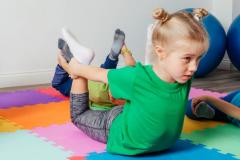- Overview
-
One of my current research projects aims to identify research outcomes after surgery that are most valued by patients, parents and healthcare workers. Another project aims to investigate the safety and effectiveness of blood salvage techniques during bone cancer surgery in children.
- Publications
-
Parental Perspectives on Pediatric Surgical Recovery: Narrative Analysis of Free-Text Comments From a Postoperative Survey (Preprint)
Jessica Luo and Nicholas C West and Samantha Pang and Julie M Robillard and Patricia Page and Neil K Chadha and Heng Gan and Lynnie R Correll and Randa Ridgway and Natasha Broemling and Matthias Görges
DOI: 10.2196/preprints.65198
08/2024Parental Perspectives on Pediatric Surgical Recovery: Narrative Analysis of Free-Text Comments From a Postoperative Survey
Jmir Perioperative Medicine
Luo, J. and West, N.C. and Pang, S. and Robillard, J.M. and Page, P. and Chadha, N.K. and Gan, H. and Correll, L.R. and Ridgway, R. and Broemling, N. and G{\"o}rges, M. and Chen, J. and Sreepada, R.S. and Wood, M.D. and Loftsgard, K.C. and Portales-Casamar, E. and Morrison, C.
DOI: 10.2196/65198
2024Counting: An imprecise reference standard for respiratory rate measurement
Pediatric Pulmonology
Ansermino, J.M. and Ginsburg, A.S. and Dunsmuir, D. and Karlen, W. and Gan, H. and Njeru, C.M. and Dumont, G.A.
DOI: 10.1002/ppul.26208
2023Are respiratory rate counters really so bad? Throwing the baby out with the bath water.
EClinicalMedicine
DOI: 10.1016/j.eclinm.2019.09.013
PubMed: 31832612
10/2019The Performance of a Mobile Phone Respiratory Rate Counter Compared to the WHO ARI Timer.
Journal of healthcare engineering
DOI: 10.1260/2040-2295.6.4.691
PubMed: 27010948
01/2015Healthcare Engineering Defined: A White Paper.
Journal of healthcare engineering
DOI: 10.1260/2040-2295.6.4.635
PubMed: 27010831
01/2015A cohort study of morbidity, mortality and health seeking behavior following rural health center visits by children under 12 in southwestern Uganda.
PloS one
DOI: 10.1371/journal.pone.0118055
PubMed: 25635947
01/2015Erratum: Improving the accuracy and efficiency of respiratory rate measurements in children using mobile devices (PLoS ONE (2015) 9: 6 (e99266))
PLoS ONE
Karlen, W. and Gan, H. and Chiu, M. and Dunsmuir, D. and Zhou, G.
DOI: 10.1371/journal.pone.0118260
2015Improving the accuracy and efficiency of respiratory rate measurements in children using mobile devices.
PloS one
DOI: 10.1371/journal.pone.0099266
PubMed: 24919062
06/2014Pediatric surgical camps as one model of global surgical partnership: a way forward.
Journal of pediatric surgery
DOI: 10.1016/j.jpedsurg.2014.02.069
PubMed: 24851771
02/2014Assessing the quality of manual respiratory rate measurements using mobile devices
IET Conference Publications
Karlen, W. and Wiens, M.O. and Gan, H. and Dunsmuir, D. and Chiu, M. and Dumont, G.A. and Ansermino, J.M.
2014Predicting fluid responsiveness in children: a systematic review.
Anesthesia and analgesia
DOI: 10.1213/ane.0b013e3182a9557e
PubMed: 24257389
12/2013Ultra-low-cost clinical pulse oximetry.
Annual International Conference of the IEEE Engineering in Medicine and Biology Society. IEEE Engineering in Medicine and Biology Society. Annual International Conference
DOI: 10.1109/embc.2013.6610140
PubMed: 24110327
01/2013Interactive visual analysis of intensive care unit data: Relationship between serum sodium concentration, its rate of change and survival outcome
GRAPP 2012 IVAPP 2012 - Proceedings of the International Conference on Computer Graphics Theory and Applications and International Conference on Information Visualization Theory and Applications
Matkovi?, K. and Gan, H. and Ammer, A. and Bennett, D. and Purgathofer, W. and Terblanche, M.
2012 - Research
-
Core Outcomes in Children undergoing Anesthesia and Surgery: A multi-center stakeholder engagement study
• Researchers studying children undergoing anesthesia and surgery currently lack guidance about what outcomes are important to measure. As a result, a wide range of different outcomes are measured in their research, outcomes that have unclear relevance to children, parents, and their healthcare team.
• In this project we will be directly engaging members of these stakeholder groups to identify those outcomes that these stakeholders consider most important after surgery in children.
• The overall study aim is to ask key stakeholder groups to identify outcomes of greatest importance for pediatric patients undergoing anesthesia and surgery. Specifically, we will undertake surveys and semistructured interviews to gather views from pediatric surgical patients, their parents/guardians, and perioperative healthcare professionals about what outcomes are important.Intra-operative Cell Salvage for Pediatric Bone Cancer Surgery
• Osteosarcoma and Ewing sarcoma are bone cancers that typically occur in children and are usually treated with a combination of surgery, chemotherapy, and radiotherapy. The possibility of major blood loss during the operation is high and transfusion of donated blood, with all the attendant risks, is often required.
• Intra-operative cell salvage refers to the collection, processing, and re-transfusion of blood lost during surgery. This well-established technique minimizes the need for transfusion of donated blood, but its adoption for cancer surgery has been limited by the theoretical risk of reintroducing tumor cells into the patient’s bloodstream. While recent evidence that a special filter effectively removes tumor cells from salvaged blood has led to increased use of cell salvage during cancer surgery in adults, its use in children remains uncommon.
• In a new collaboration between The Department of Anesthesia and The Department of Pathology and Laboratory Medicine, we propose a two-part study to investigate the safety and efficacy of cell salvage during bone cancer surgery in children. Phase I is laboratory based and will use flow cytometry to determine the lower limit of detection of tumor cells in blood. In Phase II we will use patient blood collected through cell salvage, with and without a filter, to determine the number of tumor cells present.Honours & AwardsThrasher Research Fund Early Career Award, 2012-2014
Best Poster Presentation, Association of Paediatric Anaesthetists Annual Scientific Meeting, 2015
Mobile Health & Ambient Assistive Technology Challenge (Bronze), Conference on Mobile and Information Technologies in Medicine and Health, Prague, 2014
Researching mental health and substance use: Q&A with new investigator Dr. Trevor Goodyear
Dr. Trevor Goodyear's interest in working with youth stems from several years as a registered nurse in Ontario and BC, including in child and adolescent mental health at BC Children's Hospital. He joined BCCHR as an investigator in October 2025.





